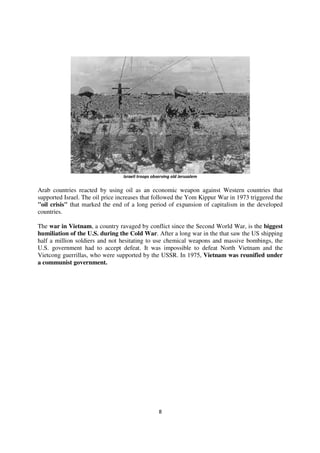The Cold War began in 1947 as tensions grew between capitalist Western nations led by the US and communist Eastern nations led by the Soviet Union. Over the following decades, the two superpowers supported opposing sides in regional conflicts around the world and an arms race escalated tensions. Key events included the division of Germany and Berlin, the formation of opposing military alliances like NATO and the Warsaw Pact, the Cuban Missile Crisis, and the Vietnam War. Attempts at détente saw some arms control agreements but also continued proxy wars. By the late 1980s, reforms in the Soviet Union under Gorbachev weakened the communist bloc until it collapsed in 1991, bringing an end to the Cold War.
![1
The Cold War (1947-1991)
Juan Carlos Ocaña Aybar
[4º ESO]
Geography and History – Bilingual Studies – IES Parque de Lisboa, Alcorcón (Madrid)](https://image.slidesharecdn.com/coldwar-150319140923-conversion-gate01/85/Cold-War-1-320.jpg)








